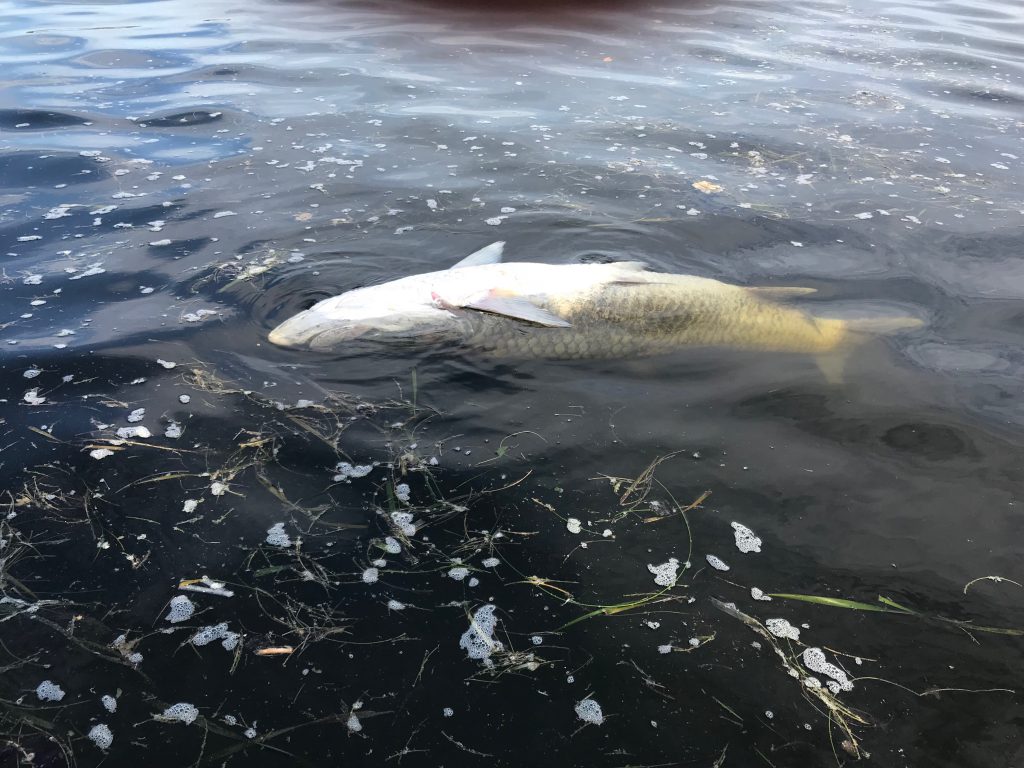(Approximately 140-pound tarpon photographed by Capt. Tommy Locke outside Cayo Costa)
Once again, Florida’s fisheries are suffering from the legacy of long-time mismanagement of Florida’s water resources. Southwest Florida is plagued by a red tide that is causing unprecedented kills of gamefish. Reports from those on the water estimate that tens of thousands of snook were killed – all of them adults in the peak of spawning season – and many dead breeding-size redfish. And tarpon, which usually avoid red tide, have also been reported dead. We fear the ongoing red tide is a sign of the ‘new normal’ because too many nutrients are entering Florida’s estuaries and coasts due to water mismanagement.
• The organism that causes red tide, Karenia brevis, has been present in southwest Florida as far back as written records go – the Spanish wrote about it.
• Karenia brevis does not benefit directly from human-introduced nutrients. This is because other plankton organisms are better initial competitors for those new nutrients, and because the red tide initiates offshore.
• Karenia brevis does appear to benefit secondarily from the extra nutrients. Once the nutrients have been used by those other plankton species, and then are cycled back into the ecosystem, Karenia brevis can take advantage. Consider this the Legacy Effect of water mismanagement.
• The ongoing red tide is unprecedented in modern times in intensity and duration.
• Although red tide has always been in the region, the frequency, intensity, and duration of red tide events appears to have increased.
The excess nutrients in Southwest Florida waters are from numerous sources. The top two are high-nutrient water from Lake Okeechobee that is discharged into the Caloosahatchee River as part of water mismanagement in South Florida (the same mismanagement that is killing the Everglades and St. Lucie River), and effluent from the phosphate mining industry in the Charlotte Harbor watershed. More local sources including stormwater and agriculture runoff, and poor wastewater infrastructure also contribute.
Southwest Florida is home to Boca Grande Pass, the Tarpon Capitol of the World. Tarpon gather in this area during May and June in association with spawning. It is likely that this red tide negatively impacted tarpon spawning.
Charlotte Harbor is also home to an amazing snook and redfish fishery. During summer months, snook spawn in passes and along beaches. This red tide will likely impact the region’s snook spawning.
This red tide event is the new normal unless the state’s water management policies are changed. This is about the future of Florida’s $8 billion saltwater recreational fishery.
Sadly, similar scenarios are playing out along much of Florida’s coast due to water mismanagement. Contact your political representatives at the local, state, and federal levels. Tell them that policy change is needed immediately.




